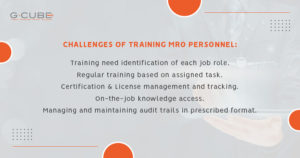If you’ve decided to localize your training content to address your large, dispersed, ethnically diverse workforce, you’ve made a very good decision. Localization, as you’re aware, makes the content more relatable, understandable and hence more engaging for the learners, than vanilla translation alone. God is in the details and localization is all about details! But it can be a daunting, expensive exercise. Sourcing the expertise, managing multiple vendors for various parts of the project, aligning internal resources, strategizing how content will change etc etc… Translation in multiple languages alone can set you behind in budget and timelines. So how do you ensure quality content localization without breaking the bank? Take a look at our 4 cost-saving suggestions below:
- Create/Use vendor with Translation Memory (TM) – If you have a frequent need for translating content, you should consider building a Translation Memory. This is a database that stores translated sentences, words, and paragraphs etc., as segments to be used for future translations. Employing a Translation Memory Software can considerably help cut down the cost and time associated with translation. However, it takes time to build this database and if time is of the essence this may not be a viable option. Many localization service providers come equipped with translation memory and can transfer that advantage to the client in the form cost and time efficiencies. Employing an experienced service provider, with TM makes even more business sense when considering multiple languages. If translation memory is available, customers only pay once in the case the same sentence gets translated twice or more often. Even if you use the memory bank only partially, it can reduce your cost of translation by as much as 25-30%!
- Use Synthetic voice instead of natural voice – If you’re making videos that require voice over, you might want to consider using a synthetic voice instead of a professional voice over artist. The latter is a much costlier resource and prone to vagaries than the former. Not only is your cost reduced, it also maintains uniformity across all content. The cost differential between them is about 50%!
- Use automated tools for integration –When you’re finally done with the above, automating the integration really helps speed up the otherwise manual process.A programming interface creates seamless integrations thereby reducing manual intervention and cuts cost almost by 30%!
- Select an experienced vendor – While you can outsource parts of the localization process to different vendors, combining them all under one, full-service vendor makes the process much more efficient in terms of reduced turnaround time, coordination and cost-efficiency. An important factor to consider is if the vendor can provide cross-language translations if required (i.e. for example translate from English to German and German to English as well). Thoroughly research the number of such projects the vendor has undertaken, language capabilities, the services pool they have (native translators etc.) and if possible, review the efficiency of their projects for clients and delivery timelines.
Employing any one of the above measures or in any combination will yield cost benefits but when employed together, the overall project savings can be as much as 50%, in comparison!
Here is a use case of how content localization can help address the needs of a large, multi-lingual workforce.
If you’d like to know more about how Localization can benefit your organization, do visit us or get in touch with us and we’d be happy to take you through it.












